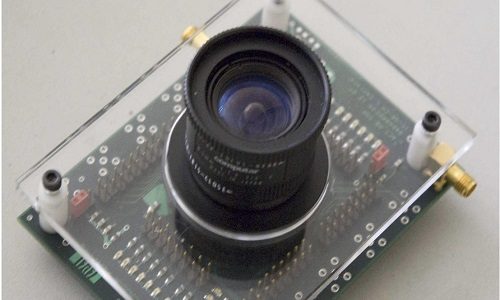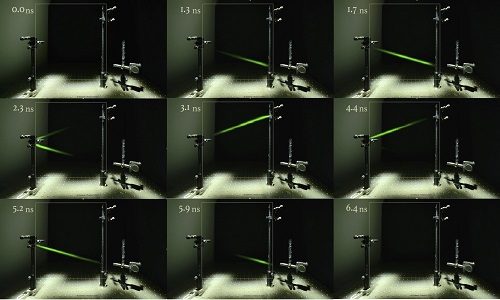This camera has the ability to not only capture tiny, fast-moving particles but also distinguish between complex shades of light, which are difficult for any traditional image capturing device

Since their invention, cameras have come a long way from being a big black-box equipment on a tripod to portable digital devices. And although the size has decreased, the camera resolution has gone in the opposite direction, becoming better with every new development. Going even further, scientists from École polytechnique fédérale de Lausanne (EPFL) in association with Canon have developed a camera that can take 3D images with record-breaking speed and resolution.
Called the MegaX, the camera can capture and count the very smallest form of light particle: the photons, that are invisible to the human eye; we can see only continuous beams of photons, like those used in laser pointers. But MegaX can film the trajectories of fast-moving individual photons present in the light rays.
When shown in video form, they look like shooting stars. To view each of them individually, the film speed had to be slowed down by a factor of 300 million. MegaX is extremely fast and can take up to 24,000 images per second (a typical movie is filmed at 24 images per second). “Thanks to its high resolution and advanced detection capabilities, MegaX could be used in applications that incorporate virtual and augmented reality,” said Edoardo Charbon, an EPFL professor and head of the Advanced Quantum Architecture Laboratory in EPFL’s School of Engineering.

Extremely powerful image sensors
So we know that the camera has extremely fast image capturing capabilities. But how does it achieve so? Researchers at EPFL had earlier developed an image sensor technology with the help of single-photon avalanche diodes (SPADs). SPAD sensors are extremely efficient at detecting single photons and converting them into electrical signals that are stored in a digital memory.
A large-format camera can be created by building an array of pixels that each contain a SPAD. The process of capturing photons takes just one nanosecond or 1×10-9 seconds. The camera can also detect exactly when a photon hits a sensor and measure how much time it took for the photon to travel between the object that emitted it and the camera, and therefore calculate that distance.
“The ability to calculate this time-of-flight and capture a million pixels simultaneously, is what lets the camera generate 3D images very quickly,” stated Charbon.
Sharp differentiation
Standard cameras are unable to precisely capture the complex scenes that are difficult for other imaging techniques to measure, such as an object viewed through a partially transparent window. Very light and very dark areas in a picture are saturated, making them appear as only black and white images to human eyes. But MegaX clearly distinguishes between both light and dark objects equally well by letting the dynamic range increase far beyond what a high-definition camera can achieve.

Ongoing enhancements
At this point, the improvements are being worked upon to modify the camera’s pixel size. A regular camera has a pixel size of 0.9 µm, but the pixel size in MegaX is ten times larger at 9 µm. “Our team is already working on a next-generation MegaX with a pixel size of 2.2 µm. The goal isn’t necessarily to make MegaX work like a conventional camera, but rather to create a 4D camera with as many pixels as possible, in order to achieve a higher resolution,” said Charbon.
Read here for more.





